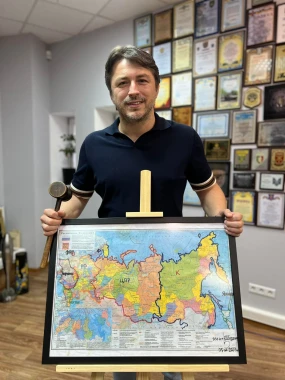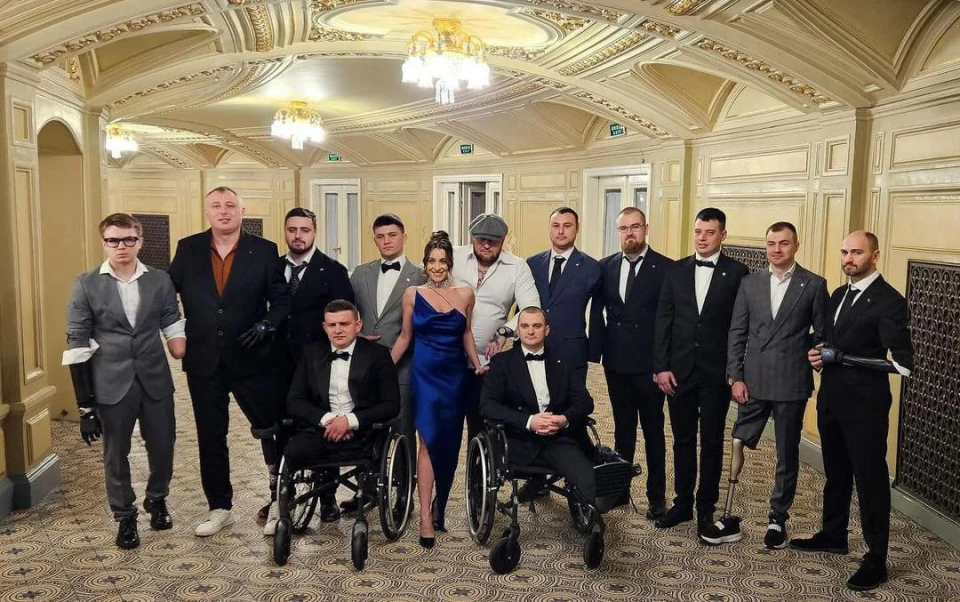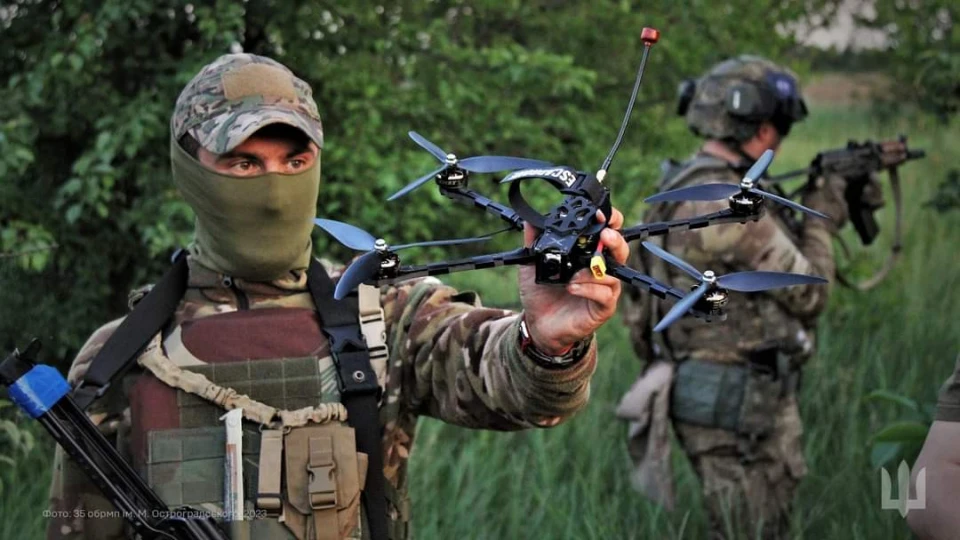
Ukrainian Home Front: How Ukrainians express their love and rage by raising money for military needs
From grassroots initiatives to innovative campaigns, Ukrainians’ efforts show the resilience and unity of a nation determined to defend its sovereignty
The Home Front
The story of civilian support for the army is as old as time. Throughout World War II, people were encouraged to contribute to the war effort, and cities and towns competed with each other to see who could raise the most money.
Ark Royal Week is one of the most important wartime achievements of the United Kingdom. The city of Leeds raised £9 million for a new aircraft carrier, whose predecessor had been torpedoed and sunk. Citizens made donations ranging from children's money for nuts and bolts to contributions of up to £250,000 from local businesses.
Similarly, in the face of the Russian invasion, Ukrainian society has mobilized with unparalleled determination to support its defenders and uphold national sovereignty. Citizens from all walks of life have rallied together, organizing fundraisers, collecting essential supplies, and offering their time and resources to aid those on the front lines.
Elderly citizens, often living on fixed incomes, are willingly parting with their hard-earned savings to bolster the resources available to the military.
94-year-old Volodymyr Ivasyshyn gave his savings of UAH 1,000 to the needs of the Ukrainian army.
This marks the second time Ivasyshyn has found himself embroiled in a war, having lived through the trials of World War II as a teenager.
And yet, Mr. Ivasyshyn's story is not unique. Across the country, elderly citizens like him are stepping forward to support Ukrainian Armed Forces in whatever way they can. From donating their pensions to volunteering their time, they are proving that age is no barrier to making a meaningful difference.
Many families have taken steps to revise their household budgets. Alongside meeting their military tax obligations to the state, they have introduced a dedicated section for donations aimed at supporting the needs of the Ukrainian Armed Forces.
For the millions of Ukrainians not directly engaged in combat, donating serves as a means to express solidarity and support for soldiers amidst the ongoing war. However, beyond expressions of support, this act stems from a profound realization: their donations are integral to survival. They understand that the well-being of not only the soldiers on the frontlines but also the civilians in the rear, hinges on ensuring that the military possesses all the essential resources required to repel the invasion.
Donation trends: Who do Ukrainians trust with their money
In today's evolving fundraising landscape, we witness a diverse array of initiatives aimed at supporting various causes to help Ukraine’s relief and military efforts. From children organizing charity concerts at local events, to influencers leveraging their online presence to support charitable causes, or soldiers stationed on the frontlines sharing drone footage to highlight the impact of donations, these efforts blend elements of wartime unity, a search for purpose, and occasionally, simply the pursuit of enjoyment.
Donations in Ukraine have surged in popularity, almost rivaling food purchases. According to recent surveys, 92% of Ukrainians contribute to aid efforts for the Ukrainian Armed Forces or those affected by the war.
In the past year, over two-thirds of Ukrainians have contributed financially to the army, with more than half actively engaging in volunteer efforts beyond monetary donations, according to another survey conducted by the Engage civic development program, supported by USAID.
The survey reveals that this pattern holds true across various segments of the population. Among adults residing in Ukraine without displacement due to the war, 70% have donated to the army, while 63% have volunteered. For internally displaced adults, the figures stand at 67% and 53% respectively. Even among those who have left the country because of the war, a significant majority, 71% and 55% respectively, have contributed financially or volunteered.
Trust often stems from personal relationships. Ukrainians feel more confident donating to fundraisers initiated by people they know personally like acquaintances, friends and colleagues.
The second most trusted are large charitable foundations, such as Come Back Alive, Serhiy Prytula's foundation, and Lachen's (blogger Ihor Lachenkov) fundraisers. A significant portion of the population also donates to governmental fundraisers (such as UNITED24).
Revenge donations: Translating rage into weapons
The relentless and brutal assaults by Russia on Ukraine have wrought death and devastation upon once peaceful cities. With each new attack, Ukrainians are plunged into depths of grief and fury, stirred by the terror inflicted upon the nation by the invading Russian forces. In response, many channel these intense emotions into concrete actions through increased donations aimed at "avenging" those who have fallen victim to the aggression of the Russian army.
Consequently, Ukrainians are actively participating in "revenge" campaigns. Since the onset of the Russian onslaught in 2022, initiatives aimed at fundraising for drones, vehicles, and other critical necessities for frontline fighters have been cropping up.
On October 10, 2022, following a massive missile strike on Ukraine, the Serhiy Prytula Charitable Foundation, in collaboration with volunteer Serhiy Sternenko, swiftly launched a donation drive, which concluded just a day later, on October 11 at 3:00 p.m. In only one day, Ukrainians managed to raise UAH 352 million, equivalent to almost USD 9 million, for kamikaze drones, surpassing the initial goal of UAH 100 million.
The trend continues into 2024, exemplified by the recent attack on March 22 targeting Zaporizhzhia and Dnipro Hydroelectric Station. Russian forces executed one of their largest assaults yet, focusing primarily on Ukrainian energy installations. This prompted a new wave of “revenge” campaigns seeking to counter Russia’s terrorist attacks.
Unconventional fundraising: How volunteers sustain people’s attention
In the realm of fundraising for army and humanitarian needs in Ukraine, the landscape can indeed be competitive as various initiatives vie for the attention and support of donors. Fundraisers offer various bonuses in exchange for donations and use marketing tools.
For example, they organize lotteries. Rewards can range from coveted items such as the latest PlayStation to memorabilia such as military insignia or trophies of the soldiers for whom funds are being raised, as well as exclusive merchandise, books, or artwork.
“The finite resources of both material and people's attention necessitate creative fundraising efforts. Initially, we organized art auctions, such as the sale of Maria Prymachenko's painting ‘Flowers Grew Near the Fourth Block’ for $500,000. Subsequently, we hosted another auction featuring the Military Collection of paintings by Ukrainian artists. In doing so, our aim was not solely to raise funds for the army but also to provide the audience with entertainment and educational enrichment. In today's context, warfare extends beyond territorial battles to encompass cultural preservation and intangible values. Hence, it's logical that the efforts of artists and the transformative power of art are enlisted in support of our defenders,” said Hanna Hvozdyar, director of the Serhiy Prytula Charitable Foundation, in an interview for Bazilik Media.
Some fundraising initiatives have surpassed the expectations of Ukrainians themselves. Following a significant Russian assault on Ukraine's energy infrastructure last autumn, the foundation launched a "revenge fundraiser," accruing $9 million in a single day. Additionally, Prytula enlisted Kyrylo Budanov, the then-popular head of Ukraine's military intelligence, to auction his renowned map depicting the division of Russia into multiple segments during the summer.

Ukrainians are also embarking on extensive hiking journeys to generate funds for the Ukrainian Armed Forces, a practice that, while not novel, has gained significant traction. Typically, enthusiasts of extreme tourism and dedicated volunteers undertake these expeditions, documenting their adventures through blogs and social media platforms.
Among those championing this cause is Mykola Mykhalchenko, a 29-year-old actor. Mykhalchenko embarked on a journey from Lviv to Kharkiv, with the primary objective of raising funds for the Hospitallers volunteer medical battalion.
"My journey is chronicled on Instagram and Twitter, with donors predominantly sourced from social networking platforms. The response has been overwhelming wherever I've shared my mission. Occasionally, while traversing the route, kind-hearted individuals offer me rides. Upon learning about my endeavor and its purpose, they generously contribute donations," Mykhalchenko explained in a Radio Liberty interview.
He further elaborates that, "While there are notable donors, surprisingly, it's the smaller donations – ranging from UAH 100 to 300 (USD 2 to 7) – that drive the bulk of the fundraiser. Even seemingly modest sums aggregate into more substantial amounts over the course of a day. Small donations, though often underestimated, play a crucial role in our efforts."
People who may not have the capacity to volunteer full-time still contribute significantly by initiating smaller-scale fundraising initiatives. They gauge support by leveraging their social media platforms, reaching out to friends, family, and followers, and encouraging them to redirect their discretionary spending, such as their "morning coffee" money, towards the cause.
It has also become commonplace to leverage personal milestones like birthdays as opportunities to rally support, urging well-wishers to commemorate the occasion by making donations to a chosen fundraiser.
“I made a fundraiser for my son's birthday and announced on Instagram that instead of traditional gifts, he could be ‘celebrated’ through donations benefiting the needs of the Ukrainian Armed Forces. Additionally, I mentioned that I would randomly select a Harry Potter book recipient from those who contributed. This concept lingered in my mind, leading to the inception of the Book Punisher—an endeavor dedicated exclusively to exchanging books for donations,” shared Maryna Baturynets, founder of the Cultural Punisher volunteer initiative.
A fundraiser's personal brand is also a key aspect that allows them to quickly meet needs.
Yulia Senyuk, a porn actress from Ukraine, known by her stage name Josephine Jackson, is trying to draw Ukrainians' attention to the need for prosthetics.
Over the 10 years of war with Russia, tens, if not hundreds of thousands of Ukrainian citizens, including both military personnel and civilians, have sustained injuries of varying severity as a result of the war. As of the fall of 2023, it is estimated that more than 20,000 Ukrainians are in need of prosthetic limbs.
Senyuk has been focusing her energy on this issue for some time now. Most recently, she organized a charity photo shoot for a calendar featuring men who lost limbs in the war. The initiative received mixed reactions, but most praised Senyuk for her social activism and efforts to help soldiers facing physical problems.
“Each photo features a different guy with me, so each photo has one of our heroes, and I am in the shadow next to him. The idea is that I want to be in the shadow, I want to be an unknown woman. And actually, to highlight the guys more. This is another goal – to give visibility and recognition to these heroes, not to me. I really want each of them to be recognized,” Senyuk explained.

All the proceeds from the sale will be donated to the rehabilitation center and the needs of the military.
Critical needs on the frontlines: Why the majority of donations goes to drones and vehicles
The Ukrainian state has made significant progress in enhancing its capacity to supply frontline fighters with the essential equipment they need. However, despite strides in meeting basic needs there are still deficiencies that remain a pressing concern for troops, as the support provided by the state falls short of their operational requirements.
FPV drones and vehicles now constitute the primary targets for fundraising efforts. These items are crucial in combat operations due to their basic yet effective nature, although they are also rapidly consumed. Many may not fully grasp that the majority of aid sent to the frontline consists of perishable materials with short “lifespans”.
This urgency is particularly true for military vehicles. Even under the best circumstances, a vehicle at the frontlines typically lasts no more than two to three months, assuming it avoids direct fire. Unpaved roads further diminish a vehicle's lifespan.
"It happens that a car doesn't even spend a day in the combat zone. For example, we once raised funds for a car, repaired it, repainted it and sent it to the front. The military parked it next to two other cars and went to lunch. A shell hit the spot where the cars were parked and destroyed the three vehicles in an instant. That's all, the car literally stayed at the front for an hour," Mykola Svistukhin, a security company commander and military volunteer, shared in interview for Kyiv Post.
Despite their brief lifespan, vehicles remain crucial in military operations. They facilitate the rapid movement of troops between positions and deployment points, enabling swift redeployment when necessary. Additionally, they play a critical role in evacuating the wounded and deceased. Often, wounded soldiers must traverse long distances to reach evacuation points, and delays can prove fatal.
"Once I helped repair a car for scouts. They told me that over three months their vehicle helped save more than 200 people because they were able to leave their positions in time," the military volunteer explained.
Moreover, vehicles serve other essential functions at the frontline, including the transportation of ammunition and equipment. Various vehicle types are also instrumental in delivering humanitarian aid, medicines, tactical medical devices, and other necessities required for daily military operations. Ultimately, well-coordinated logistics, supported by vehicles, stands as one of the most crucial factors in enhancing the quality and success of combat missions.
The situation is similar for various types of drones, particularly the FPV type. The deployment of drones at the frontline stands as one of the most impactful methods to safeguard the lives of fighters while efficiently neutralizing enemy threats. Drones possess the capability to autonomously execute a wide array of tasks, thereby reducing reliance on infantry groups. They excel in conducting search and rescue missions, providing cover for troops, adjusting artillery fire, and enhancing situational awareness on the battlefield.

“In my opinion, the future belongs to drones like the DJI Mavic 3 and FPV attack drones. If you have enough of them, you can cleanly destroy whoever and whatever you want, saving thousands of rounds of ammunition. Drones are like an aircraft carrier in World War II. A game-changing weapon,” an aerial reconnaissance fighter shared.
Often hailed as "eyes in the sky," drones offer pilots an aerial perspective that was previously exclusive to air forces. This vantage point renders drones invaluable for reconnaissance purposes. Military forces utilize drones extensively to identify enemy positions, conduct search and rescue operations, and engage enemy targets. By leveraging their advanced capabilities, drones significantly enhance the operational efficiency and effectiveness of military endeavors on the frontline, while simultaneously minimizing the risk to human lives.
“The very fact of having a drone reduces losses to a minimum. However, drones, both civilian and military, are expensive consumables. Due to the large number of electronic warfare (EW) systems, the average lifespan of a drone with a professional crew in the sector studied is approximately 5-10 days,” he stressed.
Moreover, drones serve as an exceptional "marketing tool." Many brigades use drone footage as a form of “promotional” material, effectively showcasing their operational effectiveness and inspiring people to contribute further donations. These videos not only highlight the crucial role of drones in military operations but also encourage continued support from the public by demonstrating the tangible impact of their contributions.
- News













































